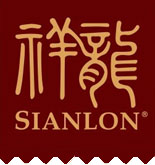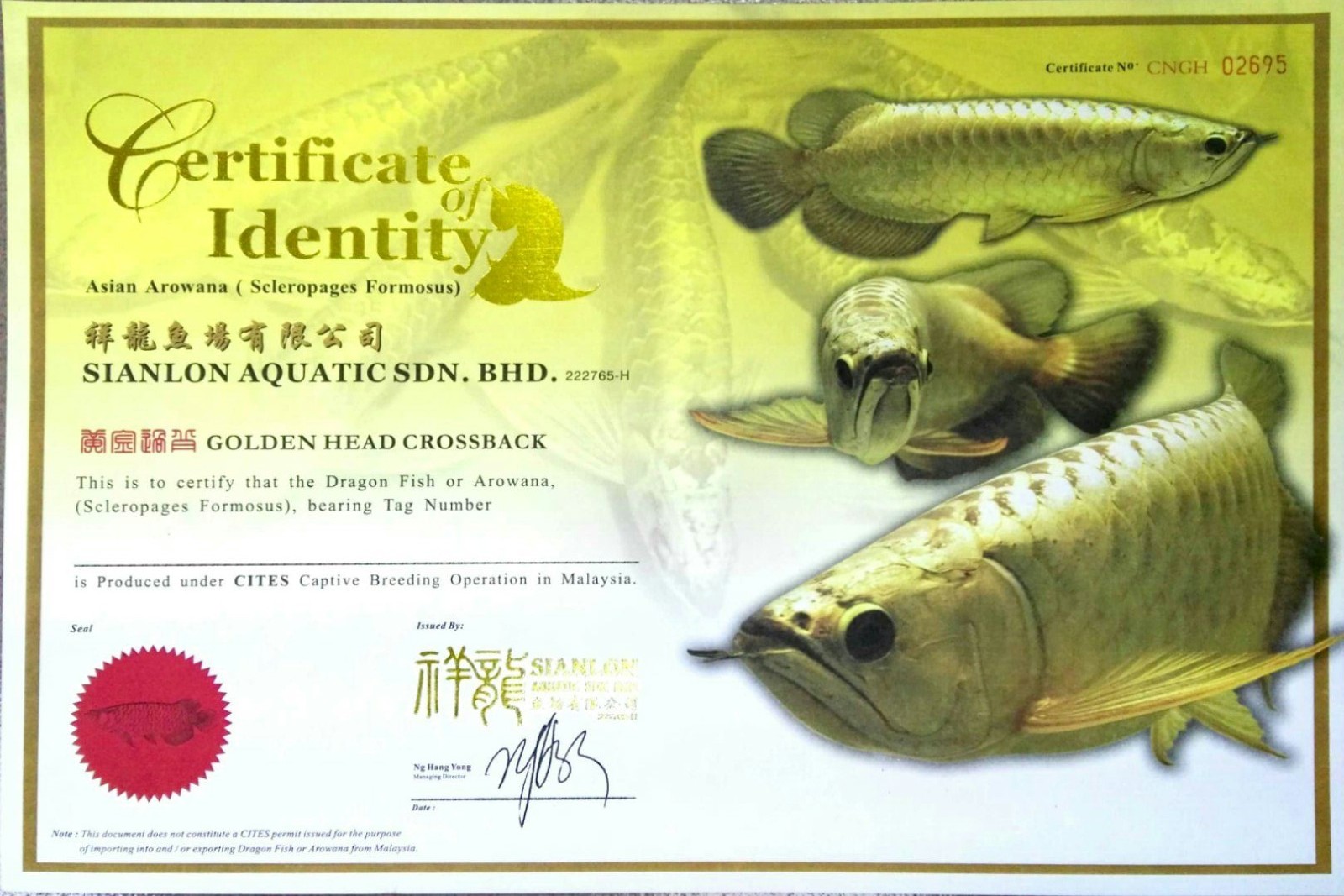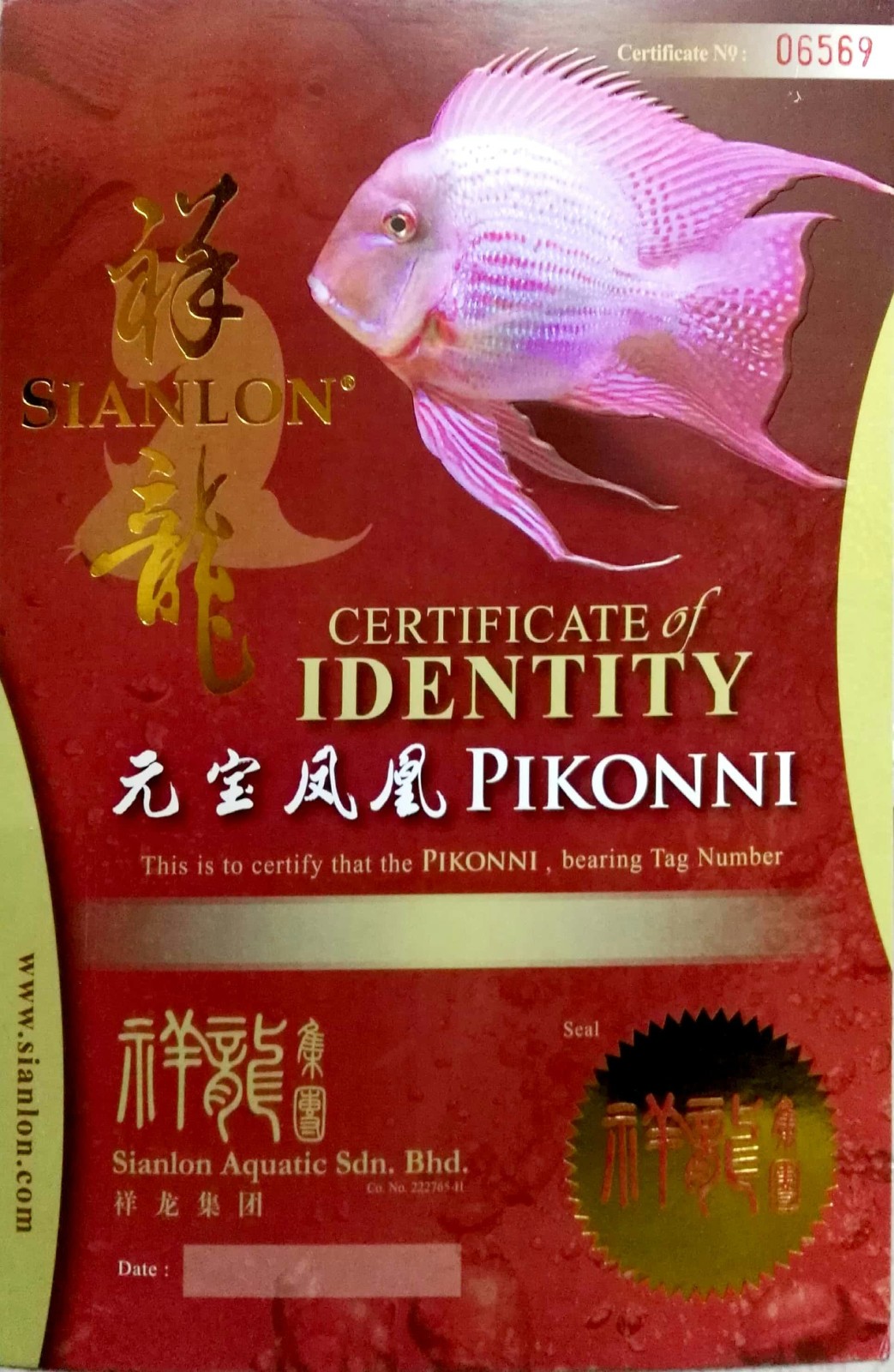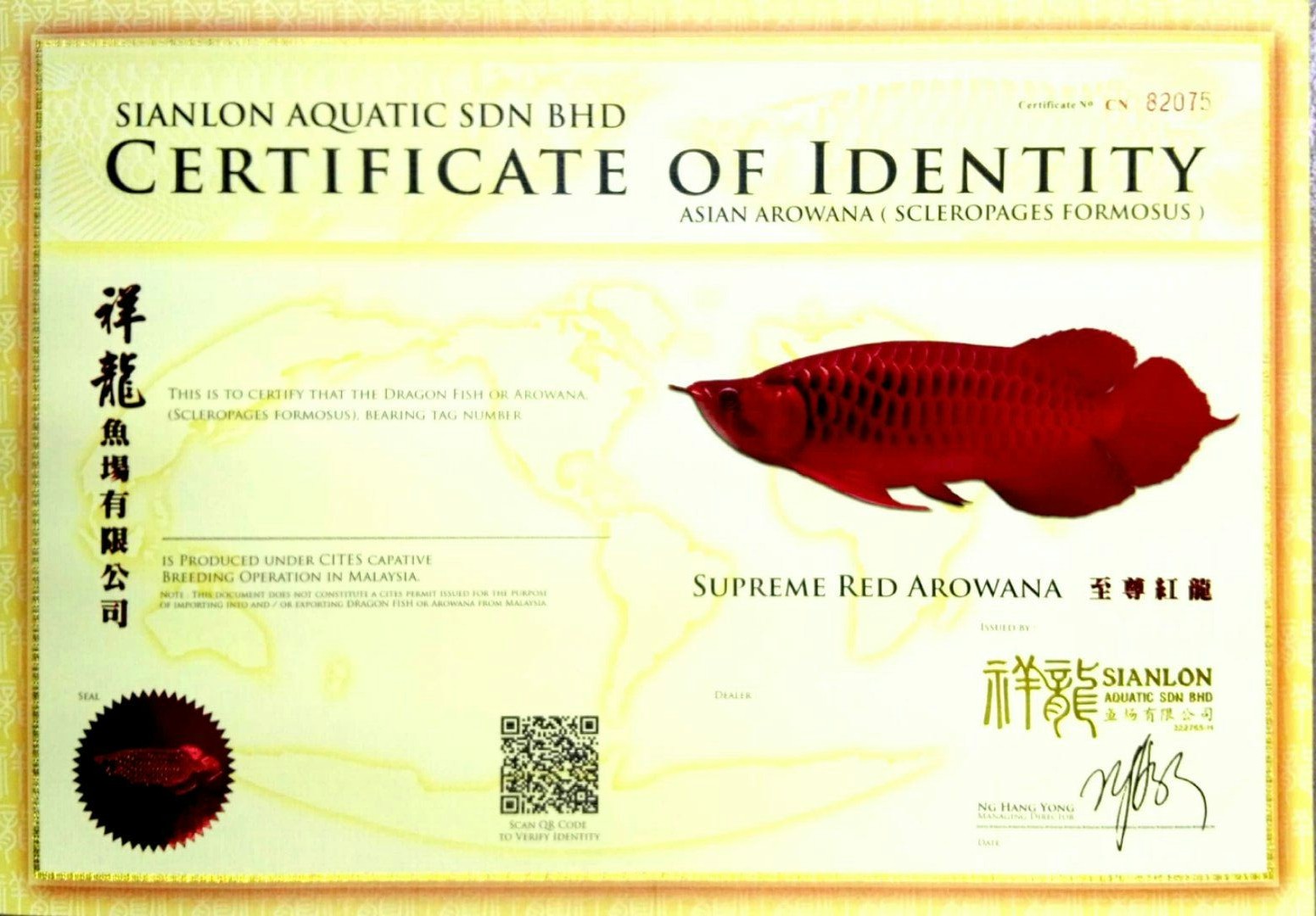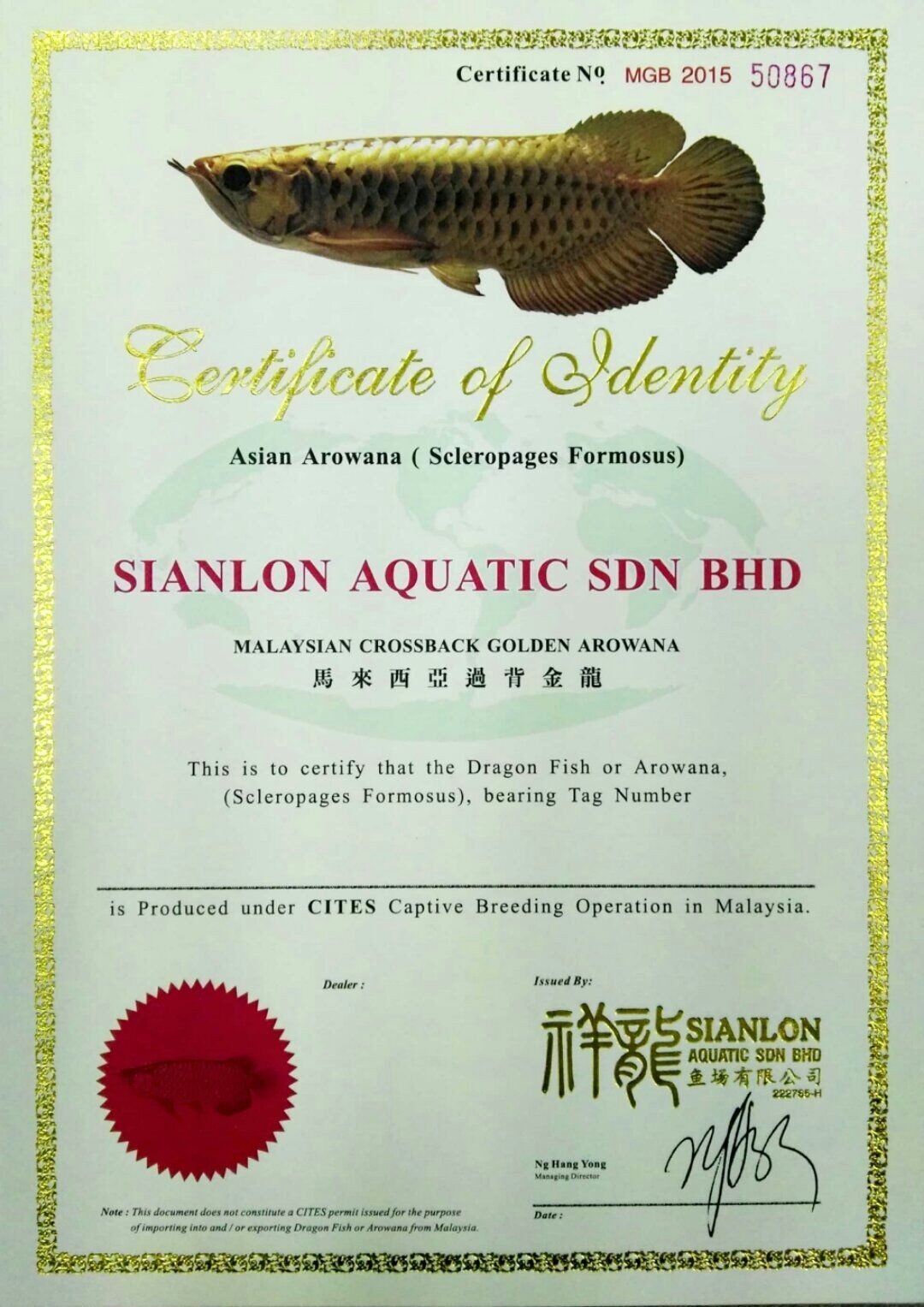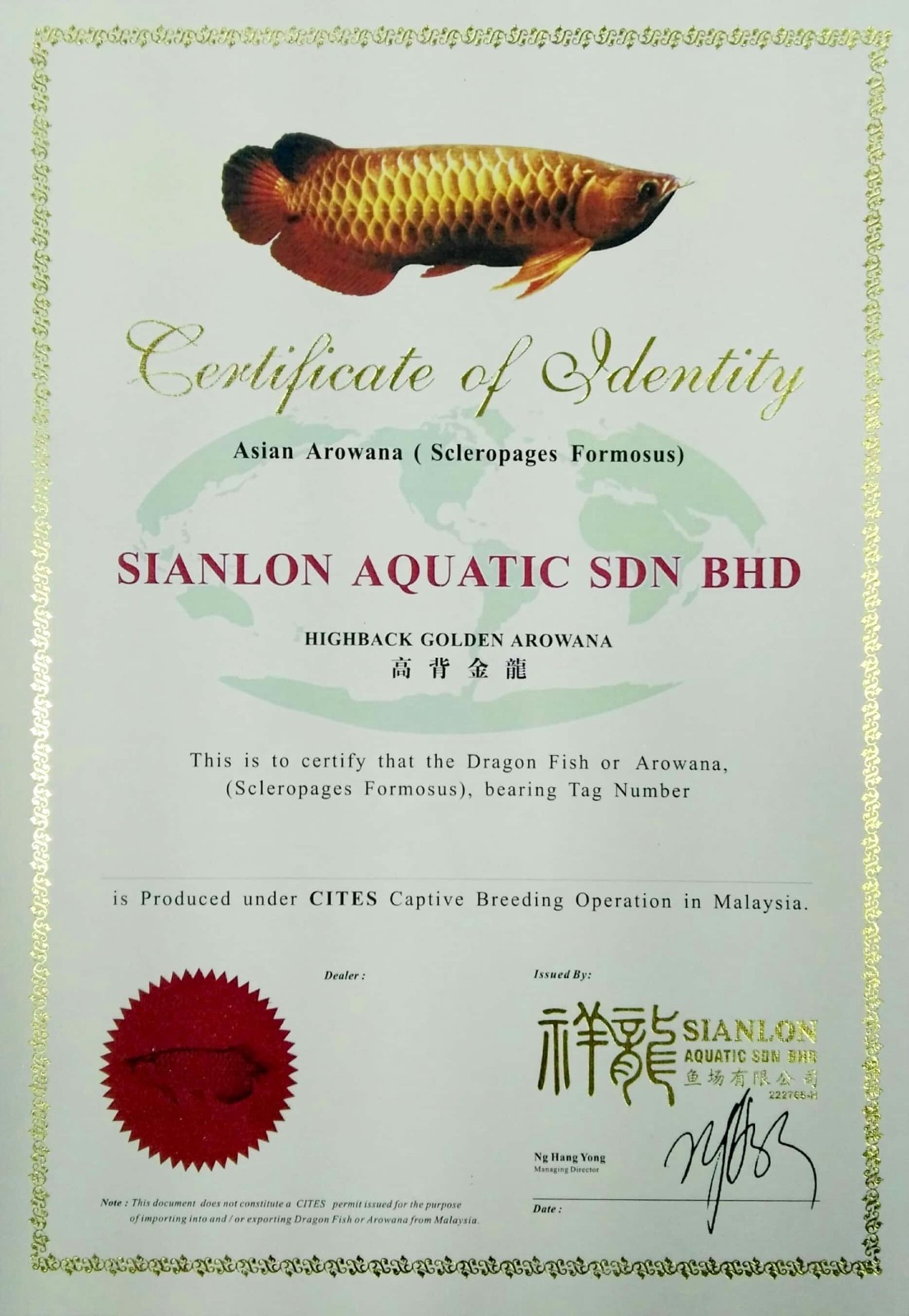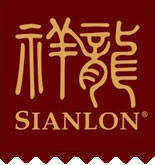SianLon Aquatic, the first breeding enterprise in Malaysia
Malaysia's first breeding dragon fish enterprise (SianLon Aquatic). Pdf
Adhering to the principle of "intention is profession", sianlon aquatic Sdn Bhd, a Malaysian ornamental fish breeding industry, has made unremitting efforts to develop various high-quality ornamental fish. So far, it has set several industry records and become one of the main farmers of dragon fish, a national treasure fish in China. The records set by SianLon Aquatic, which originated from the jurisdiction of bazhuba, Johor, include the world's first registered company that has obtained the license of the Convention on international trade in endangered species of wild animals and plants (CITES) for commercial reproduction and export of arowana; It is the first breeding farm for stingrays by artificial means and has the largest number of stingray species; The first fish farm in Malaysia to breed giant arowana (walrus, giant bone tongue fish) belonging to class II protected animals; Malaysia's first listed ornamental fish breeding company
。
Huang Hanyong, one of the founders of the company, said in this regard that the dragon fish, now the main production and marketing force of the company, was only one of the ornamental fish sold in the first place, until it was accidentally found that it was raised in the pool for shipment
The world's first cites licensed commercial breeding and export of Arowana
Adhering to the principle that intention is professionalism, SianLon Aquatic makes unremitting efforts to develop all kinds of high-quality ornamental fish, and is one of the main dragon fish farmers. The company has set several industry records, including the world's first registered company that has obtained the license of the Convention on international trade in endangered species of wild animals and plants to commercially reproduce and export arowana. Under this permit operation standard, each arowana species and exported arowana in the field must have identity records, and each batch of exported fish must clearly list the quantity and obtain relevant approvals, and the export method can only be air transportation,
Cable breeding technology has developed to today's breeding scale after a long time of efforts. Arowana gave birth to fish larvae and began to try to cultivate. It began to explore the breeding technology by itself. After a long time of efforts, it developed to today's breeding scale.
Huang recalled his involvement in the culture of arowana in 1987 and said that since there was no local technology for reference and no guidance at that time, he had to stay by the pond every day to observe the habits of arowana, especially to understand the reproductive characteristics of this fish. He pointed out that arowana is a fish with low reproduction rate, which is why it is listed as an endangered animal. Generally, the mature arowana in the wild is produced only once a year, and the breeder can produce it twice. Regardless of wild or cultured, the common point of arowana reproduction is that it can only reproduce naturally. At present, it is still unable to achieve artificial breeding.
Each batch of export requires approval
After one year's exploration, Huang finally came to the reproductive habit of arowana. It turned out that the male and female mating was to promote fertilization in vitro. Later, the male will hatch with the fertilized egg in his mouth; After about 60 days, the hatched young fish can swim before opening their mouth to release them. Huang said that a pair of male and female fish can get about 50 fertilized eggs per mating, but more than 10-20 young fish hatch and survive successfully each time. In order to improve the hatching survival rate, Huang's approach is to dig out the eggs from the male fish's mouth in the middle of hatching, transfer them to the hatching workshop in the field, and release them into the pool after the young fish hatch to 3 inches long.
Xianglong farm successfully farmed arowana in 1988. Later, at the suggestion of officials of the Fisheries Bureau, it officially applied to relevant international organizations for an international trade license for endangered wild animals and plants in 1990. It was approved in 1994 and became the first arowana production and marketing company to obtain this license. Huang said that under this permit operation standard, each arowana species and exported arowana in the field must have identity records, and each batch of exported fish must clearly list the quantity and obtain relevant approvals. The way of export can only be air transportation.
Novel coronavirus pneumonia is China's largest market, and the company exported its dragon fish to the country before the outbreak of the new crown pneumonia, but last year's outbreak led to its export disruption for more than 3 months, and the volume of exports after recovery was less than before, he pointed out. He said that although the export of arowana to other countries and regions did not stop during the epidemic except China, the overall export volume decreased by 40%, which shows the importance of the Chinese market.
However, he also said that although the export volume of arowana decreased due to the epidemic, the sales of other ornamental fish were not affected and even showed an upward trend. He believes that this is because the epidemic makes everyone stay at home as much as possible, so as to pass the time by enjoying all kinds of ornamental fish.
Grasp water quality conditions by experience
One of the main 33 acre breeding farms of Xianglong company has more than 100 breeding ponds, and the number of arowana species in the whole farm has been maintained at 5000 for a long time. Huang pointed out that after hatching, the arowana can be sold when it reaches 6-8 inches long after breeding for 6-7 months; The growth and maturation rate of arowana vary with species.
The water depth of the dragon fish culture pond is maintained at about 1m for management convenience. The stocking amount is determined according to the area of each pond. In terms of aquaculture water quality, Huang said that the requirements for water quality of ornamental fish are not as high as those of edible fish, but the impact of poor water quality cannot be ignored. He said that the water quality of cultured arowana should be slightly acidic and not too alkaline. Others, such as water color, soft hardness and dissolved oxygen, should be handled by experience. Pay special attention once the weather changes, otherwise the young fish may die due to the change of water quality. At the same time, the feeding times should be reduced in bad weather to avoid indigestion symptoms of arowana.
Huang pointed out that arowana is usually fed once a day, mainly small fish, shrimp and insects. If the climate is not ideal, it will be fed once every two days. As for other problems faced by arowana, they can basically be dealt with symptomatically with years of experience. He said that due to good care, the average cultivation rate of arowana in the field is 80 ~ 90%, and the life span of arowana can be as long as 50 years.
Let lovers have close contact
Huang Hanyong began to raise small goldfish, fighting fish and tiger fish with his brother in 1978 because of his preference for ornamental fish. Then he opened a shop in 1983 and opened the first farm in 1985. With the one-stop production and marketing model, he has gradually developed into the main production and marketing company of dragon fish in China; Other brothers also developed well in this industry and cooperated closely with each other in production and marketing.
Huang Junwei, who has taken over the second generation, said that the ornamental fish breeding business that his father worked hard to create because of his interest at that time is really not easy to operate at present. The reason is that the high-risk ornamental fish industry has gradually declined locally. Fortunately, arowana can still do it because of its large market, but it must be transformed in time for long-term development. In terms of transformation, Huang Junwei's first step is to open the farm for arowana lovers to visit and camp with their families, so that they can get close contact with their favorite arowana and understand its growth process. At the same time, it can promote parent-child time and give modern children the opportunity to contact nature. He said that since the farm launched this project, it has been very popular with arowana and even ornamental fish lovers.
The second is to strengthen the promotion and education of arowana. Therefore, an arowana exhibition hall is set up in bazhubahia for the public and students to understand the information and company background of arowana.
Huang Junwei also encourages more people interested in arowana and even ornamental fish industry, especially young people, to enter and breed, and Xianglong company can cooperate and give corresponding guidance. ◆ the water depth of the arowana culture pond shall be maintained at about 1m to facilitate management. Although the arowana does not have high requirements for water quality, it should also pay attention to the impact of weather changes on water quality and the death of young fish.
